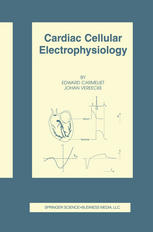

Most ebook files are in PDF format, so you can easily read them using various software such as Foxit Reader or directly on the Google Chrome browser.
Some ebook files are released by publishers in other formats such as .awz, .mobi, .epub, .fb2, etc. You may need to install specific software to read these formats on mobile/PC, such as Calibre.
Please read the tutorial at this link: https://ebookbell.com/faq
We offer FREE conversion to the popular formats you request; however, this may take some time. Therefore, right after payment, please email us, and we will try to provide the service as quickly as possible.
For some exceptional file formats or broken links (if any), please refrain from opening any disputes. Instead, email us first, and we will try to assist within a maximum of 6 hours.
EbookBell Team

5.0
68 reviewsCardiac Cellular Electrophysiology is intended for the clinical cardiologist who wishes to refresh or deepen his understanding of the cellular basis of cardiac electrophysiology, for researchers interested in the basis of the electrical activity of the heart, such as clinical investigators, physiologists or pharmacologists, for teachers in physiology, pharmacology and other biomedical studies, and for medical students from graduate to postgraduate level.
Cardiac Cellular Electrophysiology starts with a primer of basic electrophysiology, the cardiac action potential and the physiological basis of the electrocardiogram. Our second aim after having introduced the basic concepts was to continue with giving an overview of the properties of the most important ionic currents in the heart, and to treat their modulation, in order to deal with the mechanisms underlying cardiac ischaemia, arrhythmias and remodelling.
Edward Carmeliet and Johan Vereecke, Katholieke University Leuven, Belgium, have collaborated for over 30 years in cardiac electrophysiology research. Their studies include the genesis of the normal action potential, its changes in ischaemia, the effect of drugs, and the mechanism of arrhythmias, using techniques from the classic potential registration with intracellular microelectrodes to whole cell clamp and single channel measurements.